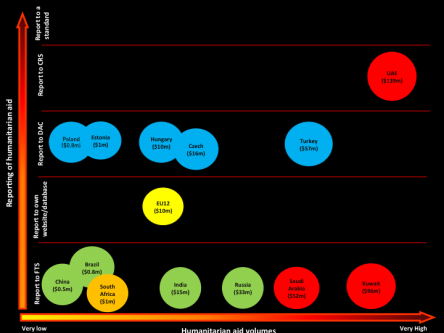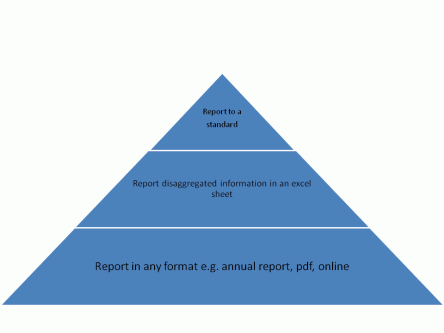Non-DAC donors and the transparency of aid information
The Global Humanitarian Assistance (GHA) programme supports the aid transparency agenda and advocates for improved access to aid information. Without access to detailed, timely and transparent information it is impossible to say how much aid is being given, by whom, where it is going and when. An inability to answer these simple questions limits our potential to evaluate the impact of aid. There are many initiatives committed to making aid more transparent, such as the International Aid Transparency Initiative (IATI). IATI, which currently has 18 signatories, aims to make information about aid spending easier to access, use and understand through the development of a standard.
Non-DAC donors, a group of donors that sits outside the Organisation for Economic Cooperation and Development’s (OECD) Development Assistance Committee (DAC) member group, are often considered to provide limited aid information which is difficult to access; they are not subject to the same reporting obligations as the OECD DAC donors. However, a number of non-DAC donors do report to the OECD DAC and have done so for a number of years (see figure 1).
[table id=18 /]
Figure 1: Non DAC donors reporting to the OECD DAC. [Source: OECD DAC]
In recent years the United Arab Emirates (UAE) has taken significant steps to make its aid more visible. In 2008 it established the Office for the Coordination of Foreign Aid (OCFA), an independent body whose role is to support the delivery and implementation of UAE’s development and humanitarian aid. OFCA’s primary task is to collect, analyse and report all aid flows from the UAE since 1971. In 2010 it reported its 2009 aid information to the OECD DAC separately from the ‘Arab countries’ grouping and is the first non-DAC donor to report disaggregated data to the OECD DAC Creditor Reporting System (CRS). This means that a detailed breakdown of the UAE’s aid can now be analysed. For more details on the UAE’s aid flows see a recent blog, ‘The United Arab Emirates reports to the DAC: one step closer to aid information?’
Despite this, we do not have an accurate figure for the aid expenditure of many non-DAC donors, let alone detailed data on their humanitarian aid contributions. To fill the gaps we currently rely on the United Nations (UN) Office for the Coordination of Humanitarian Affairs (OCHA) Financial Tracking Service (FTS), a real-time database containing humanitarian aid data from a number of donors, including non-DACs. In 2009, 90 non-DAC donors reported their humanitarian aid information to this database.
However, the FTS is not without limitations as it relies on donors voluntarily reporting their information. As a result, not all flows are captured. We expect that the aid contributions of some non-DAC donors are in fact far higher than the levels reported. A look at Turkey’s humanitarian aid proves this point. In 2005 alone Turkey reported aid contributions of US$78.7 million through the FTS compared to the substantially higher US$237.7 million through the OECD DAC. Figure 2 shows some of the key non-DAC donors’ humanitarian aid volumes alongside the degree to which they report their humanitarian aid information. For example, the UAE reports to multiple databases such as the FTS, OCFA, the DAC and the CRS and was also the largest non-DAC donor of humanitarian aid in 2009.
Figure 2: Non-DAC donors’ humanitarian aid volumes compared to reporting of humanitarian aid. [Source: Development Initiatives based on OECD DAC and FTS data, 2009]
We believe that some non-DAC donors are making considerable progress in increasing the availability of their aid information but some still have a long way to go. The GHA programme identifies three levels of reporting as outlined in the figure 3. There are many stages to publishing information and at a minimum we would encourage donors to report their data, in any format.
Figure 3: Levels of reporting aid information as advocated by GHA.
Related content
Priorities for the UK’s incoming Secretary of State Alok Sharma
As Alok Sharma takes office as Secretary of State, DI's Amy Dodd sets out key priorities for the UK and its global development agenda.
From review to delivery on the Global Goals – what should the immediate priorities be for the UK government?
On 26 June, the UK government published its Voluntary National Review measuring delivery against the Global Goals - but does it accurately capture progress?
Three priorities for the High-level Political Forum 2019
DI Director of Partnerships & Engagement Carolyn Culey sets out three key priorities for closing the gap between the poorest and the rest at HLPF 2019

